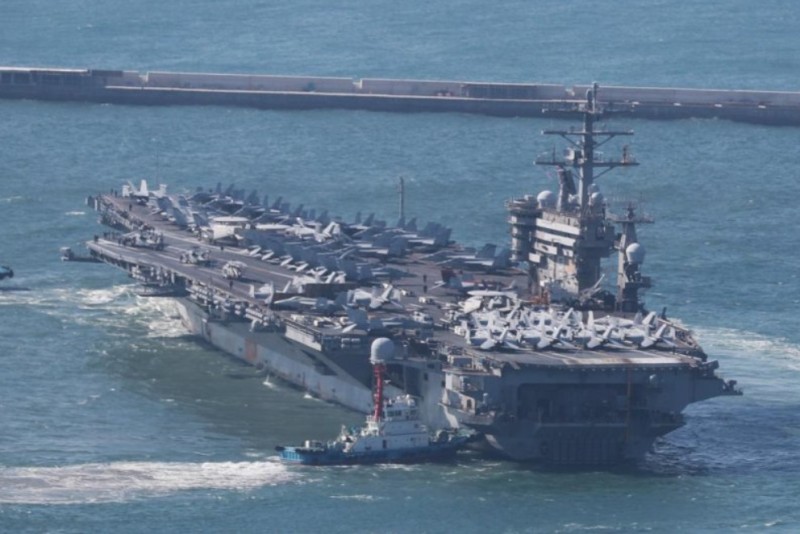
Seoul: As North Korean missile threats grow, the South Korean, US, and Japanese navies started their first anti-submarine drills in six months on Monday, according to South Korea's military.
The two-day exercises coincide with fears that North Korea may conduct its first nuclear test since 2017 following the country's recent disclosure of a type of battlefield nuclear warhead.
The nuclear-powered USS Nimitz aircraft carrier and naval destroyers from South Korea, the US, and Japan participated in the maritime exercises in international waters off the southern Korean island of Jeju, according to a statement from the country's defence ministry.
Also Read: Wagner asserts that Bakhmut was captured "legally,"
According to the statement, the training was organised to strengthen the three nations' abilities to counter underwater security threats posed by North Korea's developing submarine-launched ballistic missiles and other assets. Unmanned South Korean and US underwater vehicles that were impersonating enemy submarines and other assets were to be found and tracked by the three nations, according to South Korean defence officials.
Because it is more difficult to predict such launches in advance, North Korea's submarine-launched missiles pose a serious threat to the security of the United States and its allies. The North has been developing larger submarines, including a nuclear-powered one, and testing sophisticated underwater-launched ballistic missiles in recent years.
Also Read: Asa Hutchinson announces the GOP's 2024 bid and implores Trump to withdraw.
In retaliation for earlier bilateral military exercises between South Korea and the US, North Korea conducted a barrage of missile tests last month. A submarine-launched cruise missile and an underwater drone with nuclear weapons capability were among the weapons tested, suggesting North Korea is attempting to diversify its underwater weaponry.
Last week, images published by North Korea's official media showed leader Kim Jong Un posing next to about ten "Hwasan (volcano)-31" warheads with various serial numbers and red tips. There were eight different short-range weapons that could use the "Hwasan-31" warhead, according to a poster on a nearby wall. Previous test flights of those weapons demonstrate their capability to hit important South Korean targets, such as US military installations there.
Since North Korea's most recent nuclear tests in 2016 and 2017 came after the disclosure of other warheads, some observers believe the unveiling of the warhead may be a precursor to a nuclear test. If it does carry out a nuclear test, it will be the first since September 2017 and its seventh overall.
Kim also instructed officials to increase the production of bomb fuel during the warhead-related event last week in order to fulfil his stated intention of "exponentially" increasing his nation's nuclear arsenal. A North Korea-focused website called 38 North reported on Saturday that recent commercial satellite imagery of the North's main Yongbyon nuclear complex shows a high level of activity, including the continued operation of its 5-megawatt reactor and new building around the uranium enrichment plant area.
Experts from other countries disagree on whether North Korea has operational nuclear-armed missiles. However, Lee Jong-Sup, the defence minister of South Korea, recently informed lawmakers that it was thought that the North had made significant advancements in its technology for producing miniature warheads that could be mounted on modern short-range missiles.
North Korea may conduct additional missile tests to express its displeasure with the joint drills between South Korea, the United States, and Japan. Kim Jong Un, the leader of North Korea, described recent US-South Korean military exercises as "reckless military provocations."
Also Read: Thai PM highlights experience before challenging election
Rear Admiral Kim Inho, commander of the South Korean forces participating in the trilateral exercises, made the following statement, which was quoted in the Defense Ministry statement: "We'll decisively respond to and neutralise any type of provocation by North Korea."
The three nations will practise humanitarian search and rescue operations, such as saving people who fall into the water and treating emergency patients, in addition to anti-submarine drills. According to a statement from the Defense Ministry, it would be the first such training for the three nations in seven years.